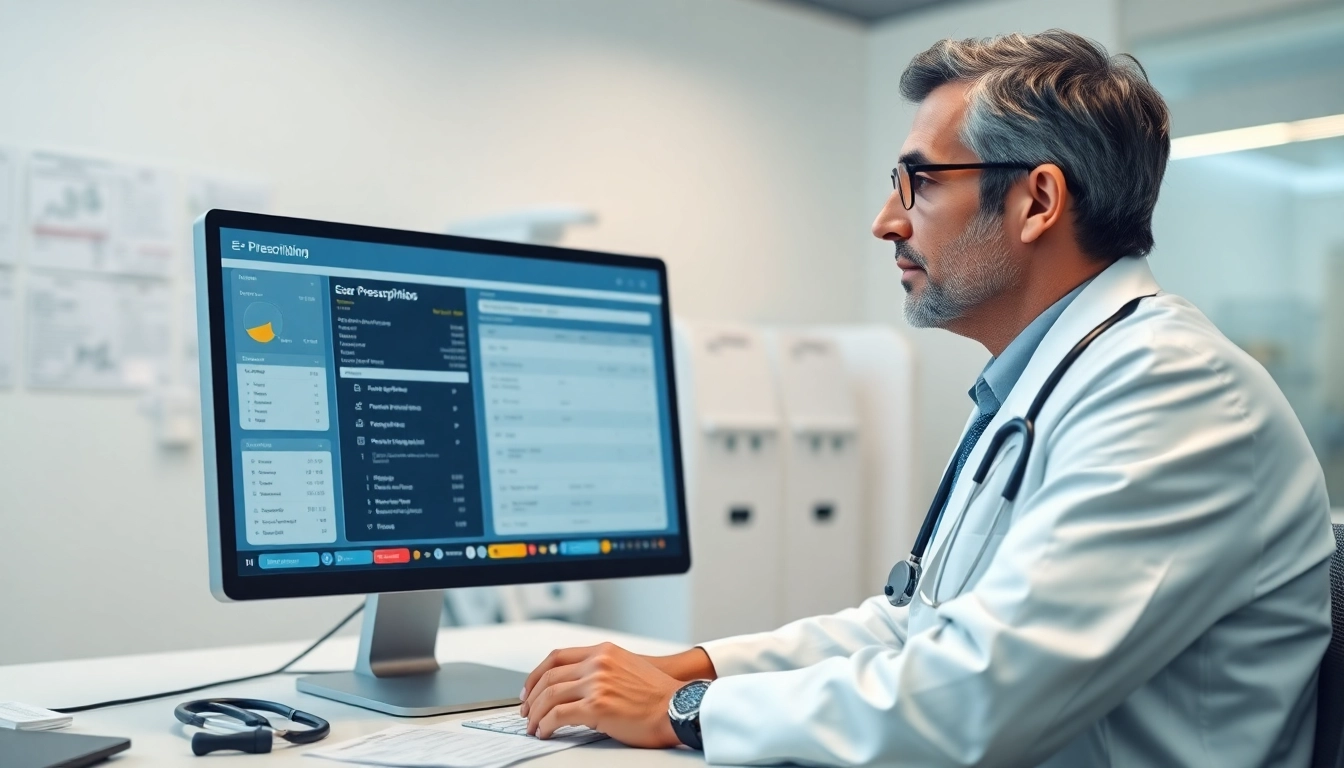Understanding E-Prescribing Software
What is E-Prescribing Software?
E-prescribing software is a digital tool that enables healthcare providers to electronically send prescriptions to pharmacies. This technology streamlines the prescribing process, making it quick, efficient, and secure. Instead of relying on handwritten prescriptions that can often lead to errors or misinterpretations, e-prescribing software facilitates clear communication about medications directly from the point-of-care. By integrating features of eprescribing software, it enhances the overall prescribing experience for both healthcare providers and patients.
Significance of Features in E-Prescribing Software
The features incorporated into e-prescribing software are crucial for improving the functionality and effectiveness of healthcare services. They not only enhance the efficiency of prescription management but also promote patient safety by minimizing medication errors. The right features ensure that healthcare providers can quickly access vital patient information, medication histories, and potential drug interactions, thereby optimizing the prescribing process.
Overview of User Experience with E-Prescribing Software
User experience with e-prescribing software varies but generally centers around usability, efficiency, and satisfaction. A well-designed user interface can significantly reduce the time healthcare providers spend on administrative tasks, allowing more focus on patient care. Additionally, robust features like intuitive dashboards and real-time validation can facilitate smoother workflows, enabling providers to manage prescriptions swiftly and accurately.
Core Features of E-Prescribing Software
Electronic Prescription Submission
The primary function of e-prescribing software is the electronic submission of prescriptions. This feature allows healthcare professionals to generate, sign, and transmit prescriptions directly to the pharmacy, removing the need for paper prescriptions. The process reduces the risk of errors, speeds up the medication dispensing timeline, and improves convenience for both the provider and the patient. In addition, it enables tracking of prescription statuses and refills, offering a comprehensive view of a patient’s medication management.
Real-Time Medication History Access
Having real-time access to a patient’s medication history is a transformative feature of e-prescribing software. This allows prescribers to view all medications a patient is currently taking, along with past prescriptions, allergies, and any adverse drug reactions. Such information is critical for making informed prescribing decisions and prevents potential medication errors due to overlooked patient history. It enhances the clinician’s ability to provide personalized and effective treatment plans.
Drug Interaction Alerts
The capability of providing drug interaction alerts ensures safer prescribing. E-prescribing software incorporates decision support tools that immediately flag potential drug interactions and allergies based on the patient’s profile. This feature is particularly vital as it helps healthcare providers to avoid prescribing drugs that could lead to severe adverse effects, subsequently enhancing patient safety and treatment efficacy. The alerts serve as an immediate reference for prescribers to adjust medications proactively and responsibly.
Benefits of Using E-Prescribing Software
Improved Patient Safety and Compliance
One of the most significant benefits of e-prescribing software is its contribution to patient safety. By minimizing human error associated with handwriting prescriptions, such as misinterpretation of dosages or medication names, e-prescribing enhances the accuracy of prescriptions. In addition, with compliance reminders and monitoring capabilities, patients are more likely to adhere to their medication regimens, leading to better health outcomes.
Streamlined Pharmacy Communication
E-prescribing software enables seamless communication between healthcare providers and pharmacies. This streamlined communication minimizes time delays associated with phone calls or faxes for prescription orders. Prescribers can quickly send, verify, and manage prescriptions electronically without the back-and-forth of traditional methods. This leads to improved operational efficiency within pharmacies, which can process medication orders more quickly and accurately.
Increased Efficiency for Healthcare Providers
The automation of the prescribing process significantly boosts efficiency for healthcare providers. E-prescribing software not only saves time during the prescription writing process but also enhances clinic workflow by integrating with electronic health records (EHR) systems. This integration allows healthcare providers to access patient information swiftly and manage prescriptions without unnecessary delays, ultimately leading to higher productivity levels and improved patient satisfaction.
Implementation and Best Practices for E-Prescribing Software
Choosing the Right E-Prescribing Solution
Selecting the right e-prescribing software is crucial for the success of its implementation. Factors to consider include the software’s features, ease of use, integration capabilities, and vendor support. Healthcare facilities should prioritize solutions that offer customizable features to meet their specific needs while also ensuring compliance with regulatory standards. Involving staff in the selection process can also result in higher acceptance and satisfaction rates.
Training Healthcare Staff Effectively
To maximize the benefits of e-prescribing software, comprehensive training for healthcare staff is essential. This training should cover the functionalities of the software, common challenges, and best practices for utilizing the tools effectively. Regular refresher courses and access to support resources can help keep staff updated on any software updates or new features, ensuring that they remain confident and competent in using the system.
Monitoring and Evaluating Software Performance
Continuous monitoring and evaluation of e-prescribing software performance are vital to ensure its efficacy in enhancing healthcare delivery. Metrics such as prescription error rates, processing times, and user satisfaction can provide valuable insights into how well the software is functioning. Regular feedback from healthcare providers and pharmacies can inform necessary adjustments or upgrades to improve service delivery and operational efficiency.
Future of E-Prescribing Software in Healthcare
Emerging Trends in E-Prescribing Technology
The future of e-prescribing software is shaped by technological advancements and emerging trends. Increased integration of artificial intelligence (AI) and machine learning is expected to enhance predictive analytics, which can anticipate potential medication issues before they arise. Furthermore, advancements in telemedicine and mobile applications are enhancing patient engagement by allowing patients direct access to their prescription information, leading to more informed healthcare decisions.
Impact on Patient Care and Safety
As e-prescribing solutions evolve, the impact on patient care and safety will likely become even more pronounced. Enhanced data analytics and reporting capabilities will allow healthcare providers to better understand patient outcomes based on medication prescriptions, aiding in the identification of best practices. This data-driven approach not only strengthens individual patient care but also contributes to broader public health initiatives by ensuring that medication safety is prioritized.
Integration with Other Healthcare Systems
Future developments in e-prescribing software heavily focus on the seamless integration with other healthcare systems, such as electronic health records (EHR), pharmacies, and laboratory systems. This integration will create a comprehensive ecosystem that supports a continuity of care, allowing healthcare providers to access complete patient information in real-time. The interconnected nature of healthcare data can foster better collaboration among providers, ultimately translating into better patient outcomes.



